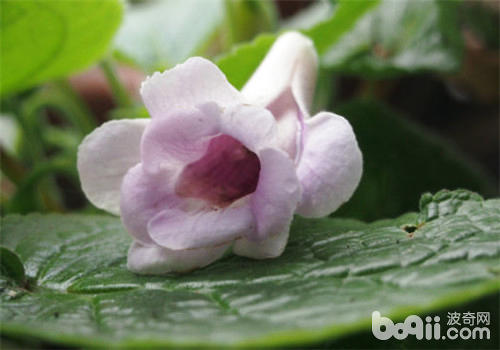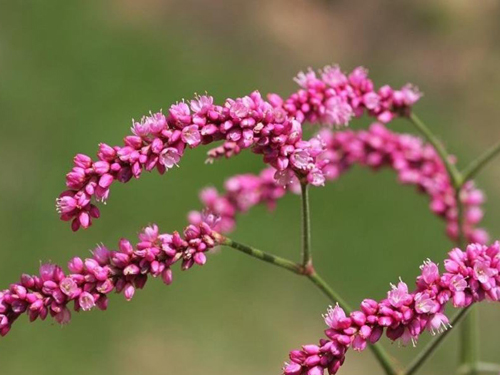Cultivation methods of Flos Lonicerae
This kind of plant has straight hairy green or red stems, and dark green leaves also have a hairy texture. The flowers are pink, purple or yellow in color, with mutual hairs and self-colored throats. The florescence is from June to + month, which is very suitable for planting in indoor flower beds.
Microclimate 1: warm, sunny.
Size: large long tube flowers can grow up to 45 centimeters, and small plants can be bought on the market in spring.
Fertilization: during flowering, liquid phosphoric acid fertilizer and water with a concentration of 1 pound 8 were poured in.
Potted plants: every year Chunda is planted in pots with proportional peat soil, coarse sand or perlite and frogstone. Adult plants must be ramified every spring.
Note: do not water in winter.

Long tube flower
Generally planted with bulbs, the weather can turn warm from April to May. After the bulbs begin to sprout, the bulbs will be planted upright or parallel to the soil surface, covering soil about 1.5 cm high. The cultivation medium needs good drainage and can be used after the cultivation soil is mixed with perlite and vermiculite. The cultivation place should have bright scattered light, and the adult plant can accept direct light, as long as it can avoid strong sunlight. If you want the plant to grow thicker (especially the hanging basin variety), you can pick the heart when the new buds pop out of the soil and grow the second or third pair of leaves to promote more new buds to grow. The suitable temperature for childbearing is about 15 ℃ at night and higher than 21 ℃ at day.
Do not let the plant lack of water during the growth period, otherwise it will cause the plant to dormancy early and the underground bulbs can not be formed. After autumn, the plant will stop blooming, and the branches and leaves will slowly wither and enter the dormancy period. At this time, it is necessary to reduce watering, promote the development of the bulb, and avoid excessive moisture to make the bulb rot. When the upper parts of the place are withered, the bulbs can be dug out and stored in transparent plastic bags, and put some slightly wet vermiculite to maintain moisture, put in a cool place, and then take out and plant the bulbs after sprouting in spring; the bulbs can also be left in the original basin, but need to be moved to a cool place to shelter from the rain, as long as the basin soil is slightly wet, do not often water.
Culture methods and matters needing attention of long tube flower
Don't call it safflower bogey chicory moss
Binomial Achimeneshybrida
The plant kingdom.
Gesneriaceae
Distribution area Guatemala, Mexico
The long tube flower, also known as safflower bogey chicory moss, is native to Guatemala and Mexico. Like warm, humid and sunny environment, not cold-resistant, afraid of frost, not resistant to direct light, loose, fertile and well-drained sandy loam. Achimenes, like her close relative, big rock tree, is deeply loved by people in Europe and America.
1. Long tube flower
Brief introduction, propagation and cultivation of Flos Lonicerae
2. Introduction
Long tube flowers 10-20 cm tall, leaves long, elliptic, serrate. Flower axil out, Corolla long tube-shaped, flowering from spring to summer. The flowers and colors are purple, scarlet, peach or white, which are in full bloom and are suitable for potted plants.
The method of sowing or cutting tubers can be used for propagation. Spring is the suitable time, and the optimum temperature for seed germination is 18-20 ℃.
Cultivation points humus soil or serpent sawdust is the best, sunshine is about 60% to 70%, avoid direct light. Topdressing with nitrogen, phosphorus and potassium fertilizer once a month. Winter dormancy should be warm and sheltered from the wind. The sex likes to be warm, and the suitable temperature for fertility is 15-28 ℃.
- Prev

Culture method of Polygonum polygonum (Polygonum orientalis, Polygonum orientalis, Dog tail Red)
Polygonumorientale: Polygonum orientalis, Polygonum orientalis, Polygonum davidii, Polygonum orientalis, Polygonum macrophyllum, Polygonum angustifolia, Polygonaceae: morphological characteristics of Polygonaceae:-annual herbs. Inflorescences drooping, reddish, red or white. Fruit spike red
- Next

Magnolia magnolia field interplanting small shrubs
In the first three years of Magnolia magnolia seedlings, in order to make up for the shortcomings of large investment and no benefit output of planting trees in the early stage, small shrubs can be planted, such as small shrubs, such as Euonymus tomentosa, Ligustrum lucidum, Berberis amurensis and so on. During the period of interplanting seedlings in the first three years, there were 6000-7000 seedlings per mu, with an average of 0.5 yuan per plant, and the income was more than 3000 yuan. After the fourth year, Magnolia magnolia grew to 5-6 cm, which could be sold at intervals of about 80 yuan per plant. Every year since then, there will be a profit from the sale. Main points of cultivation: when the one-year-old seedlings of Magnolia were planted, the plant spacing was 1. 5%.
Related
- Fuxing push coffee new agricultural production and marketing class: lack of small-scale processing plants
- Jujube rice field leisure farm deep ploughing Yilan for five years to create a space for organic food and play
- Nongyu Farm-A trial of organic papaya for brave women with advanced technology
- Four points for attention in the prevention and control of diseases and insect pests of edible fungi
- How to add nutrient solution to Edible Fungi
- Is there any good way to control edible fungus mites?
- Open Inoculation Technology of Edible Fungi
- Is there any clever way to use fertilizer for edible fungus in winter?
- What agents are used to kill the pathogens of edible fungi in the mushroom shed?
- Rapid drying of Edible Fungi

